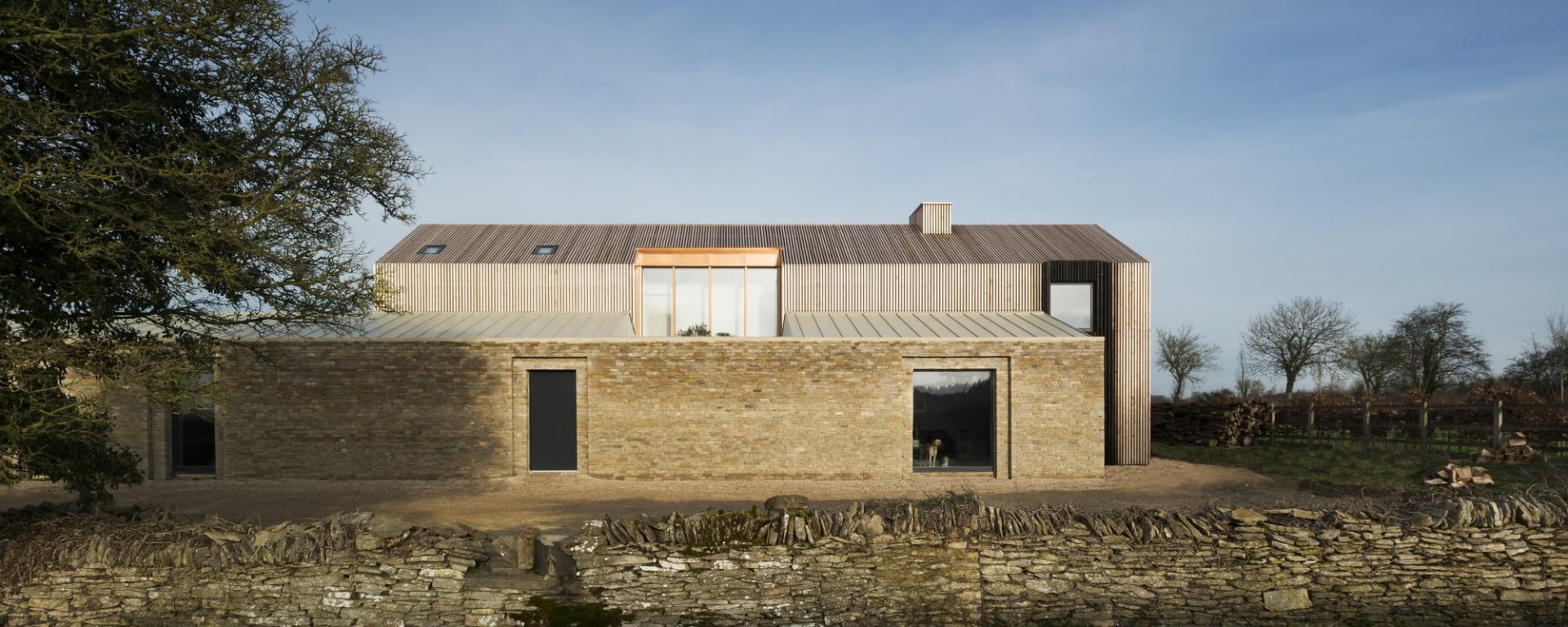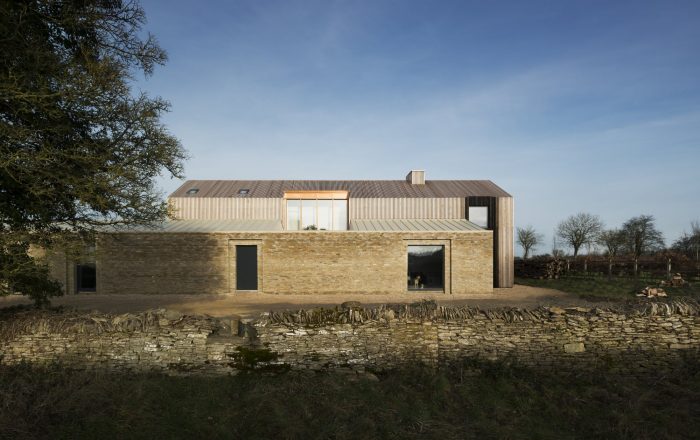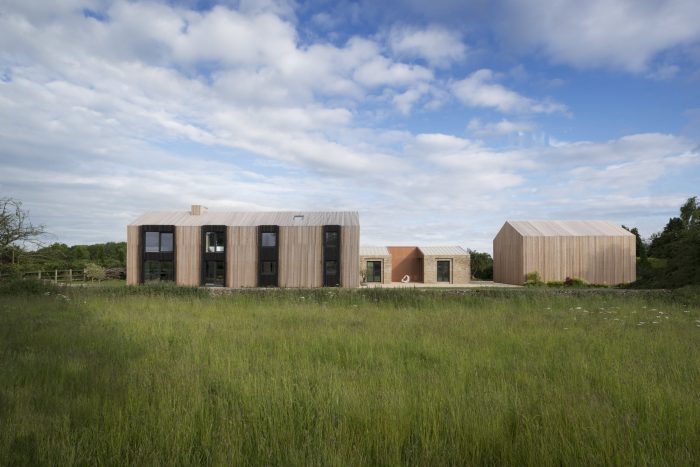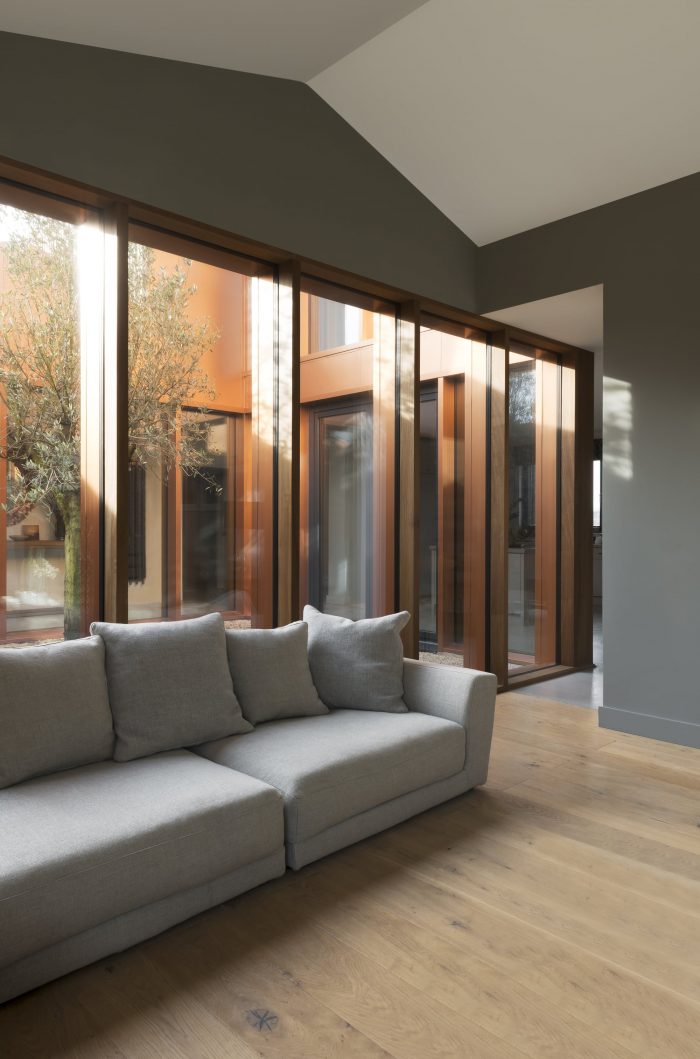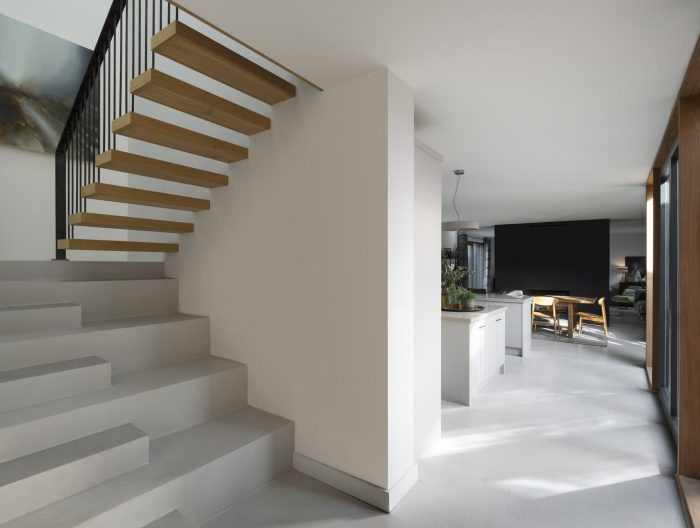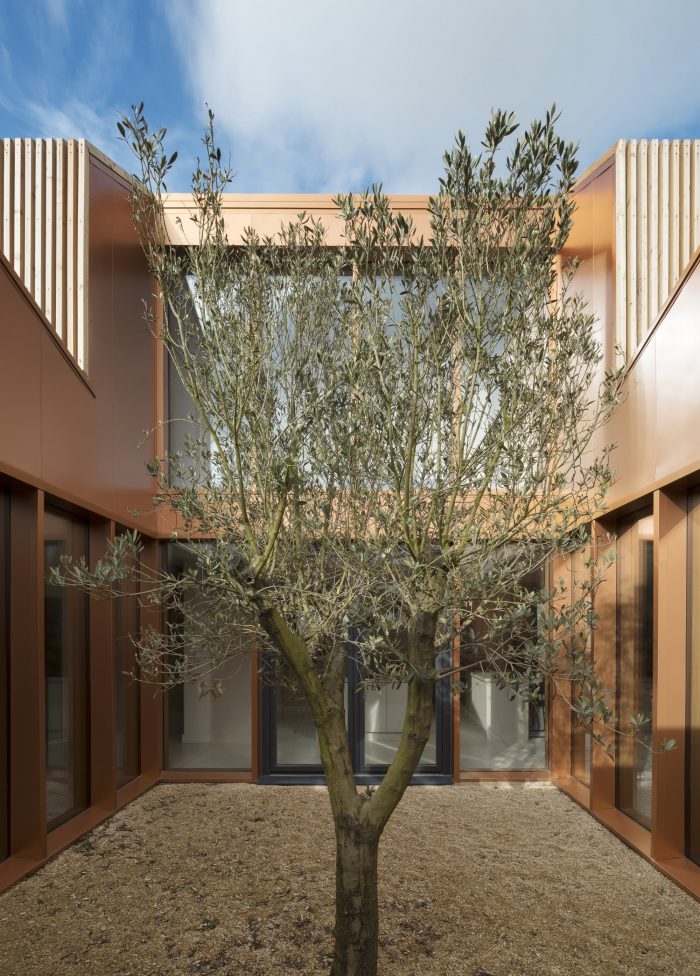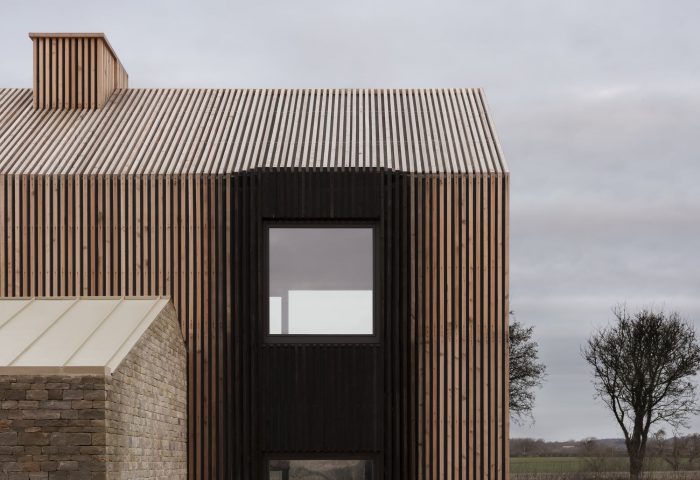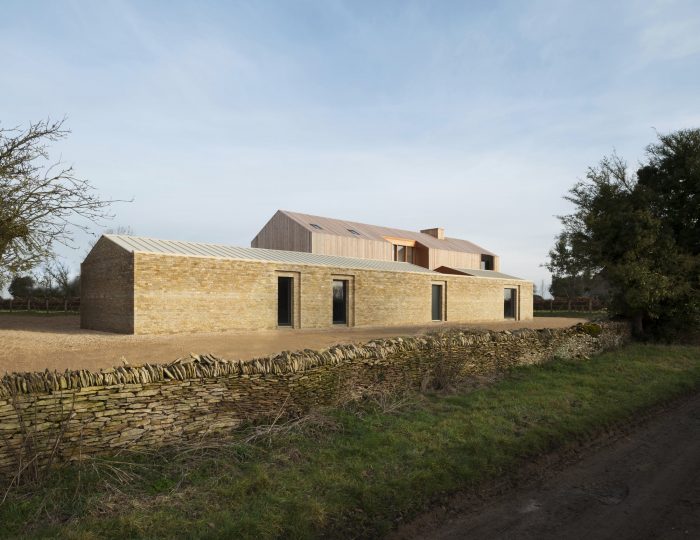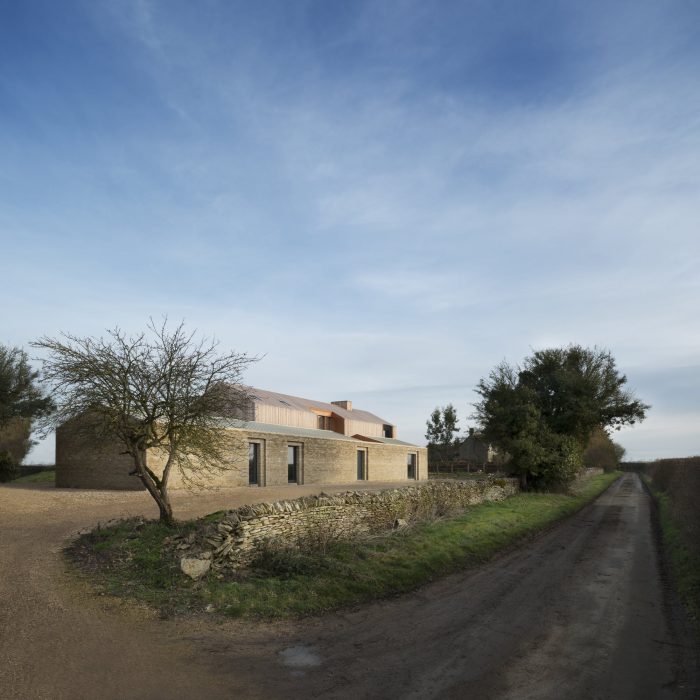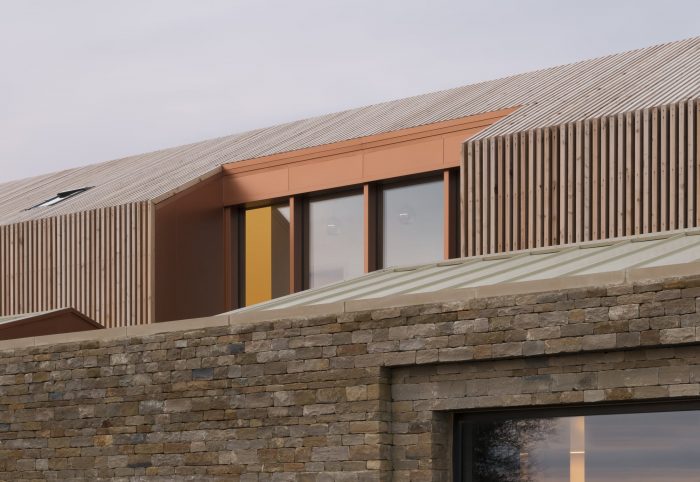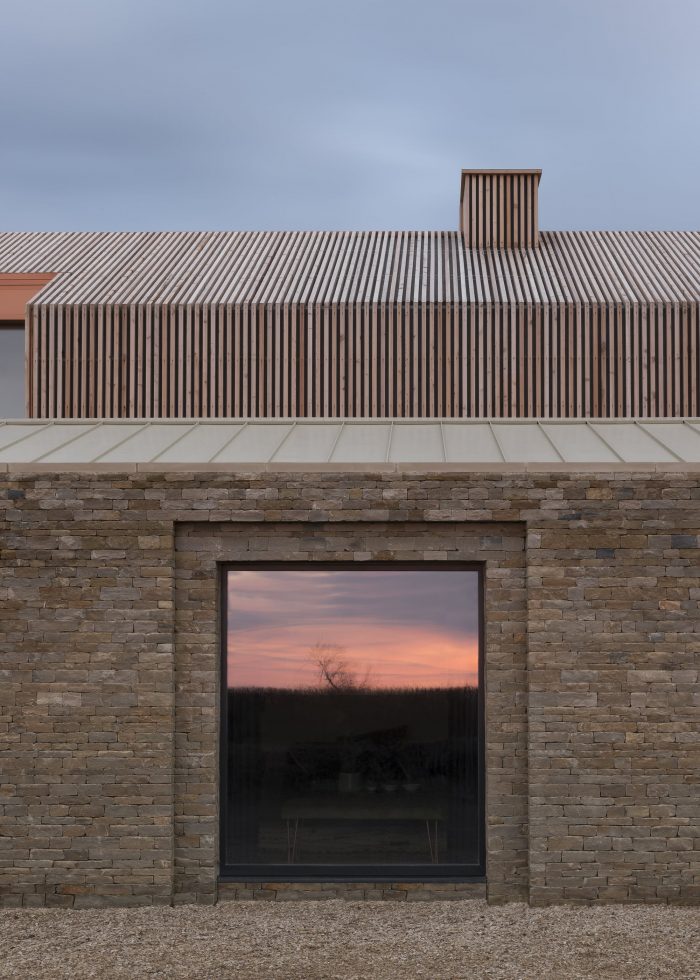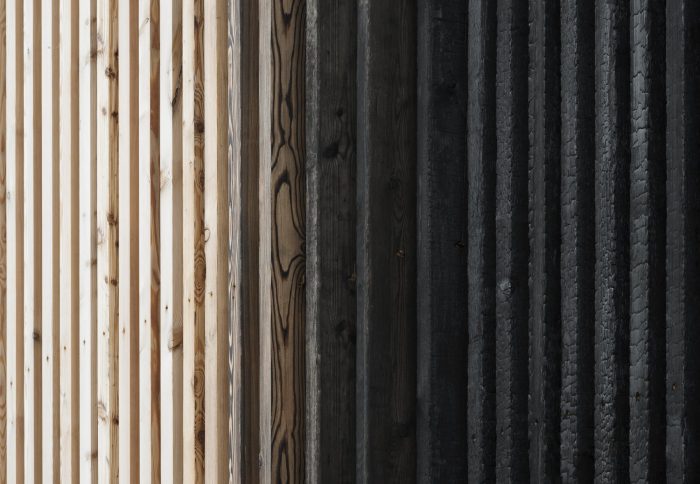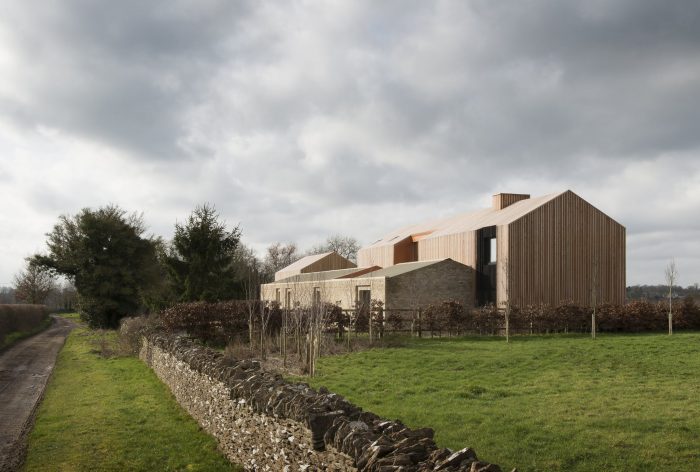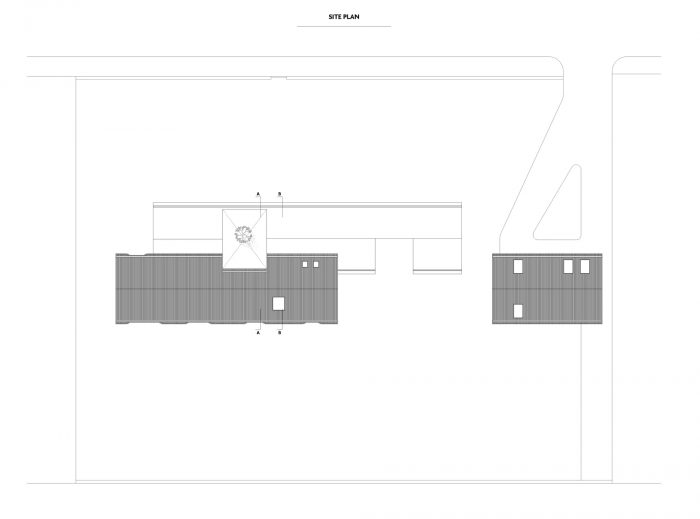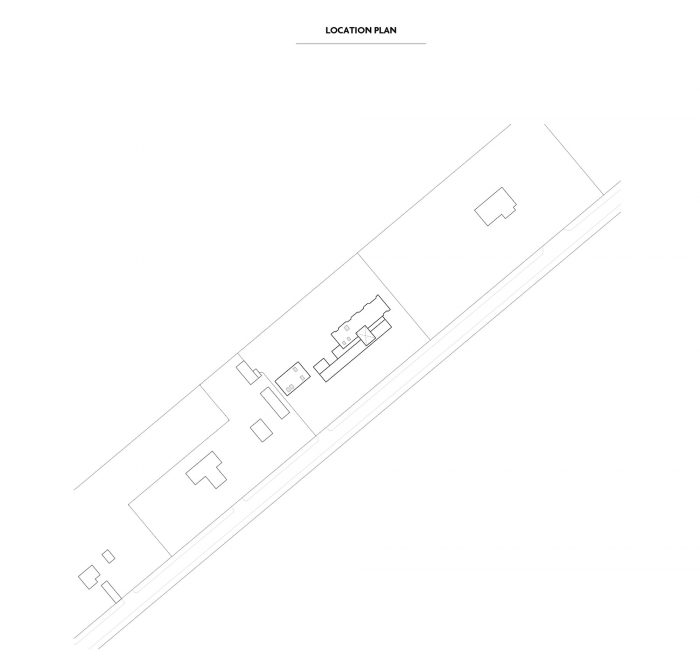这座位于科茨沃尔德的新家重新诠释了农村的风土人情,使用了互锁的谷仓形式和当地材料的调色板。以以前占用场地的两个30米长的木制鸡舍为出发点,房子是传统谷仓体量的游戏,被推拉以适应客户的需求。在室内,主要的生活空间围绕着内部天井呈扇形展开,成为住宅的焦点。天井以铜为材料,是一个引入自然和光线的时刻。
Reinterpreting the rural vernacular, this new home in the Cotswolds uses interlocking barn forms and a palette of local materials. Taking as a starting point the elongated forms of two 30 metre-long, timber chicken sheds which previously occupied the site, the house is a play of traditional barn volumes which have been pushed and pulled to suit the needs of the client. Inside, the key living spaces fan out around an internal patio, which acts as a focal point for the home. Clad in copper, the patio is a moment where both nature and light are introduced.
在材料上,房子反映了我们对工艺和细节的兴趣。密切关注当地的历史建筑实践和材料方法,产生了一种既复兴又重新解释当地的语言。此外,该建筑符合被动式房屋的原则–用绝缘混凝土模板系统创造一个热围护结构,在朝南的立面上限制开口,三层玻璃窗单元和一个热回收通风系统,以保持全年的空气质量。
Materially, the house reflects our interest in craft and detail. Paying close attention to local historic building practices and approaches to material have generated a language which both revives and reinterprets the vernacular. In addition, the construction meets passive house principles – with an insulated concrete formwork system creating a thermal envelope, limited openings on the south-facing façade, triple glazed window units and a heat recovery ventilation system to maintain air quality year-round.
前面的谷仓是由当地的工匠用干石墙建造的,选择它不仅是因为它与当地有关,而且是因为它固有的质量和肌肉的品质。这个立面是整体性的,开口较少,在前面产生了一个更重的、坚实的体积。作为对立面,后面较高的谷仓采用了重量较轻的天然落叶松,在每个窗户的凹槽处都被烧成了深色的皮革黑。
The front barn has been built in dry stone wall by a local craftsman, chosen not only for its local relevance but for its inherent qualities of mass and muscularity. This façade is monolithic, with fewer openings to produce a heavier, solid volume at the front. As a counterpoint, the taller barn at the back is clad in a lighter-weight natural larch which has been charred to a deep leathery black at each window recess.
然后用刷子将炭化的痕迹刷掉,使其重新融入天然落叶松中–创造出一种混杂的效果,强调了窗户凹陷处有节奏的推和拉。这两种材料的选择都预示着一个缓慢的风化和老化过程,将进一步把新家嵌入其乡村环境中。
This charring has then been brushed away to gently blend it back into the natural larch – creating an ombré effect which emphasises the rhythmic push and pull of the window indentations. Both material choices anticipate a slow process of weathering and ageing that will further embed the new home into its rural setting.
Architects: Bureau de Change Architects
Area : 500 m²
Year : 2019
Photographs :Gilbert McCarragher
City:CIRENCESTER
Country:UNITED KINGDOM

